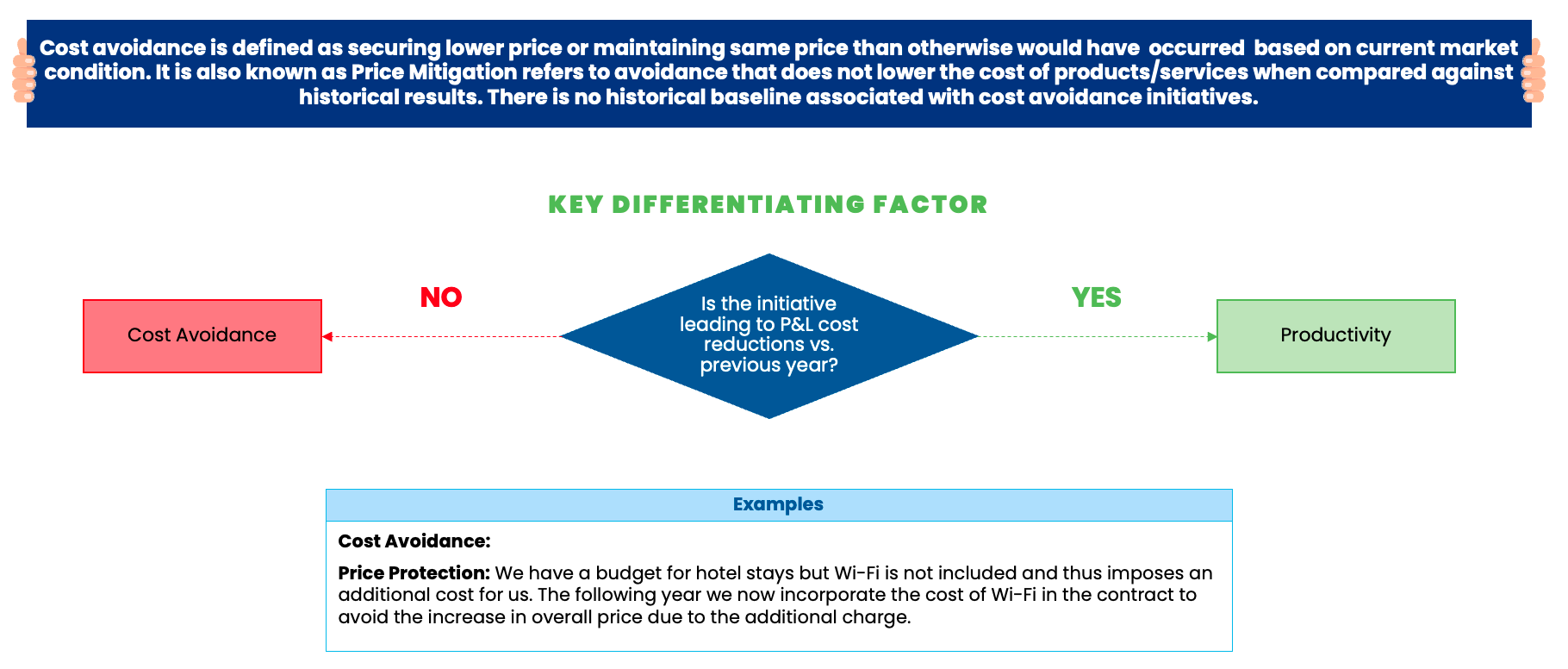
Cost Avoidance

Cost Avoidance
Example of Cost Avoidance
- Reducing the price through negotiations or finding cheaper suppliers (no PY baseline)
- Cost negotiation Improvement
- Significant renegotiation to decrease costs upon a documented push back
INDIRECT FRAMEWORK: Productivity vs. Cost Avoidance

*Cost Avoidance should be tracked in the Powerstering but it does not count towards AOP Targets.

How to Evaluate a Project for Productivity
Questions to consider when evaluating a project for productivity savings
- Are the savings driven by CAPEX or OPEX?
- Is there an established historical baseline rate from prior fiscal year?
- Are you calculating productivity based on prior year spend vs. current year spend?
- Are you calculating productivity based on prior year cost per unit vs. current year cost per unit?
- Is the productivity forecast reflecting a full year (12 months) of savings?
- Does the productivity include TCO (Total Cost of Ownership)?
- Are you comparing rates for same Fit, Form, Function?
- Are you comparing rates of assets & services that are Like for Like?
- Are rates/costs variable or fixed?
- Rebates & Credits:
- Is the total rebate/credit $ received, equal to higher than last year?
- Is the productivity calculation based on prior year rebate/credit $ received vs. current year rebate/credit $ received?
- Is the rebate/credit a contractual agreement?
- Is the rebate/credit a one-time occurrence?
- Is the rebate/credit related to a refund of assets or services already paid for?